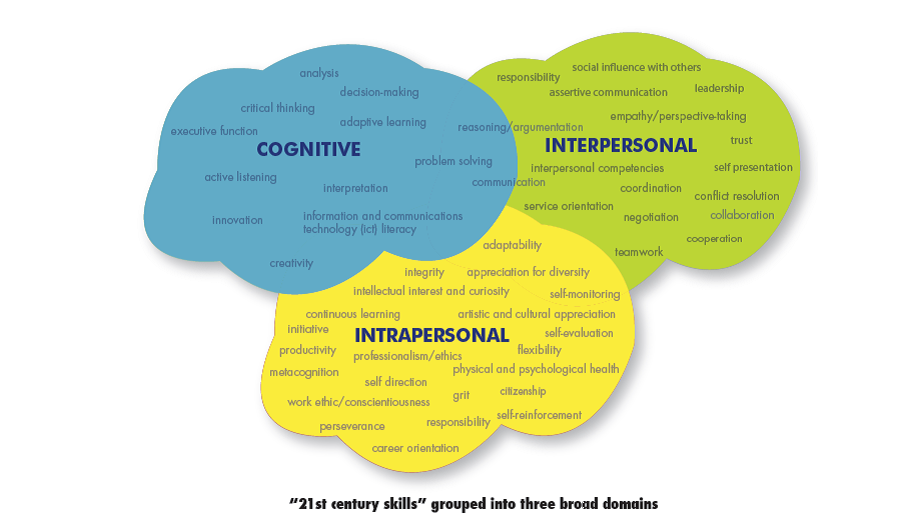21St Century Skills for “Deeper Learning”

Much has been made of the need for schools to teach students the so-called 21st century skills. These skills prepare students for a dynamic world, which requires innovation, creativity, leadership and communication. These are skills and knowledge recognized by the national academies (Science, Engineering, Medicine, and Research) as necessary for success in education and work.
The 21st century skills movement also has a global perspective. And it requires “deeper learning,” the process through which a person becomes capable of taking what was learned in one situation and applying it to new situations. This is the transferability of knowledge and skills. It requires the integration of problem solving skills, critical thinking and collaboration into the teaching of the academic subjects.
I discussed some of these skills (the “C” skills) in my previous blog, You Have a College Degree, but Can You Pass the Google Test?
In its guide for educators, Education for Life and Work, the National Research Council groups 21st century skills into three broad domains:

Source: Education for Life and Work: Guide for Practitioners, National Research Council
Strategies for the Classroom
These three competencies can be taught and learned so that that the transference of knowledge and skills can be developed both within and across subject areas. It involves deep knowledge in each subject area and also an interdisciplinary approach across subject areas.
Teaching that emphasizes not only content knowledge but also how, when and why to apply this knowledge is essential for this transference to occur. Also, the effective and engaging learning happens when all three domains are addressed.
Here are some teaching methods cited by the National Research Council guide that can be used to teach these competencies:
Multiple and varied presentation of concepts and tasks:
- Diagrams
- Numerical and mathematical representations
- Simulations
Elaboration, questioning and explanation:
- Encourage students to explain what they are learning
- Have students teach to other students in the class who are struggling to understand
Project-based learning:
- Engage students in individual and group projects
- Use challenging, real-world problems
- Make student presentations an important part of the learning
Challenging tasks:
- Promote exploration, analysis and challenge
Examples and cases:
- Model problem-solving
- Teach step-by-step processes
Motivation:
- Connect to real-life situations
- Use students’ interests
- Encourage discovery of the joys of problem-solving
- Teach students to reflect on what they have learned and its importance and relevance
Formative assessments:
- Monitor student achievement
- Provide feedback to teachers and students
- Use assessments to adjust the teaching and learning strategies and speed
Global perspective:
- Investigate the World – experientially and technologically
- Weigh perspectives – appreciate cultural differences
- Know another language
- Engage and apply what they have learned to real world challenges
The National Research Center guide urges educators to practice deeper learning techniques across all levels of learning, from kindergarten through college and beyond. “Teaching in these ways will make it more likely that students will come to understand the general principles underlying the specific content they are learning and be able to transfer their knowledge to solve new problems in the same subject area.”
